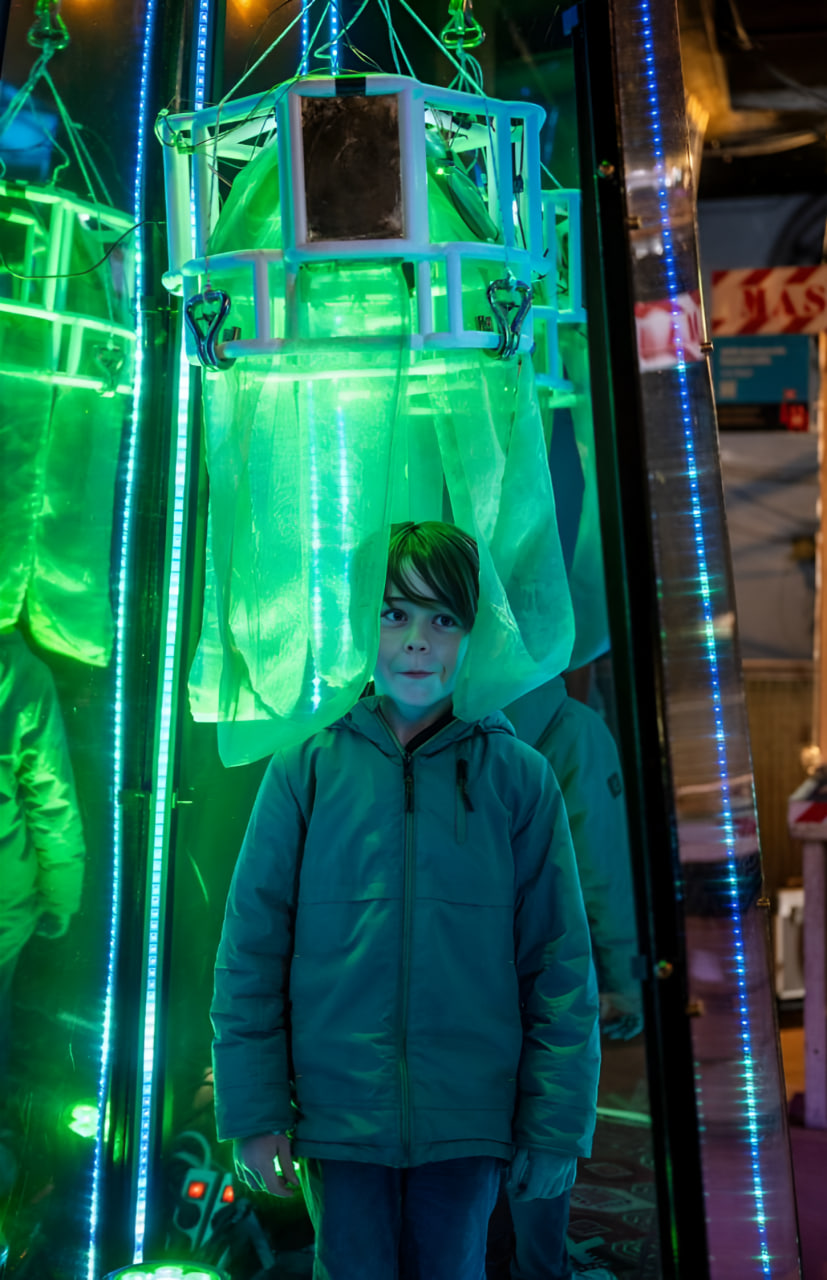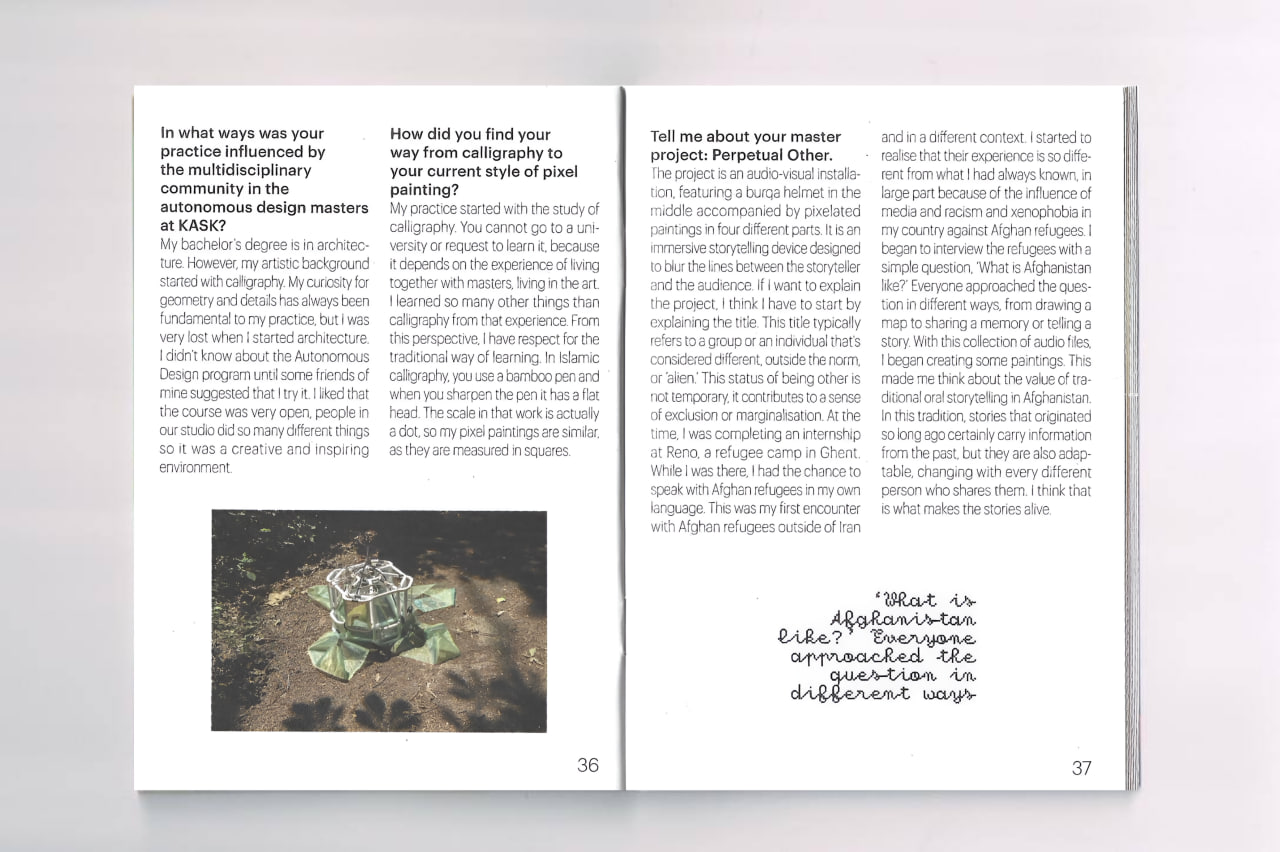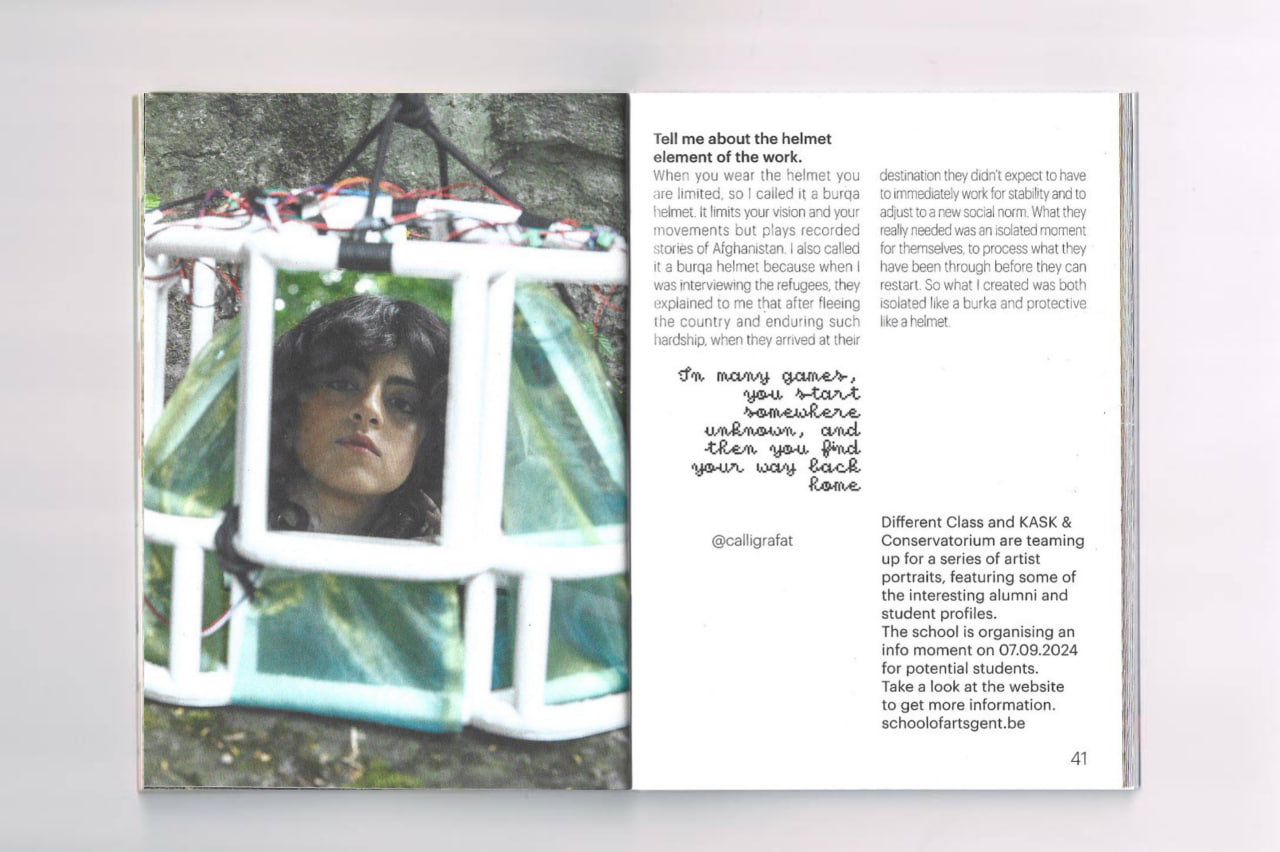This project is an audiovisual installation featuring a Burqa-Helmet at the center accompanied by pixelated paintings.
The term "Perpetual Other" typically refers to an individual or a group that is constantly perceived as different, alien, oroutside the norm by the dominant or mainstream culture. The status of being"other" is not temporary but ongoing, leading to a constant sense ofexclusion or marginalization.
(Iran is the second largest host countryfor Afghan refugees. However, racism, or more accurately xenophobia, iswidespread towards Afghan refugees in Iran. For example, my father'sgrandmother experienced this discrimination. She was from Afghanistan but wasidentified as Pakistani to avoid the judgments and shame the familycarried.The systematic racial discrimination leads the culture to consider all Afghansas Taliban, perceive Afghans as lazy and incompetent, and view the refugees asjob stealers or criminals.)
When I was working at RENO, I had theopportunity to talk with Afghan people in my own language, which allowed me tounderstand their experiences and perspectives very differently from how theyare often described in the media.
What is Afghanistan like?
To explore this, I began interviewing Afghan refugees. They approached the question in various ways, such as "drawing maps", "sharing memories", and "telling stories". Their responses reflected a mix of reality, imagination, and illusions. I compiled these interviews into an audio collection & created pixelated paintings to illustrate their stories.
Oral Litreture
Afghanistan has a very rich oralliterature. This oral literature plays a significant role in preserving humanknowledge through the transmission of epic and tragic stories. These storieshave been told countless times and passed down through generations, colored bythe memories and interpretations of those who tell them. While the storiesmight change in all different ways, which isn't always beneficial for theoriginal narrative, this process spreads a sense of awareness and thepossibility of discussion.
Burqa-Helmet
Now i wanted to share these stories & provoke discussions, so I came up with the idea of a 4D soundscape that lets you experience the stories in a new way. There is a moment of understanding that comes from quiet contemplation, allowing us to imagine and ponder the stories. I imagined a storytelling device that alters your sonic experience based on how you wear it.

In many stories of Afghan refugees, afterfleeing the country and arriving at their destination, they require a period ofisolation and processing before integrating into new social norms or engagingin daily life and work as required in a new society. This period serves as amoment for reflection on what they have been through.
I imagined this state asboth isolated and defensive, shielding the wearer from the external world. Theoctagonal shape of the helmet is inspired by the 'Hashti,'an Iranian traditional architectural element representing a space betweeninside and outside. However, our prototype, made with recycled headphones,wasn't portable. Thus, we developed the sound scape using microchips to address this limitation.



